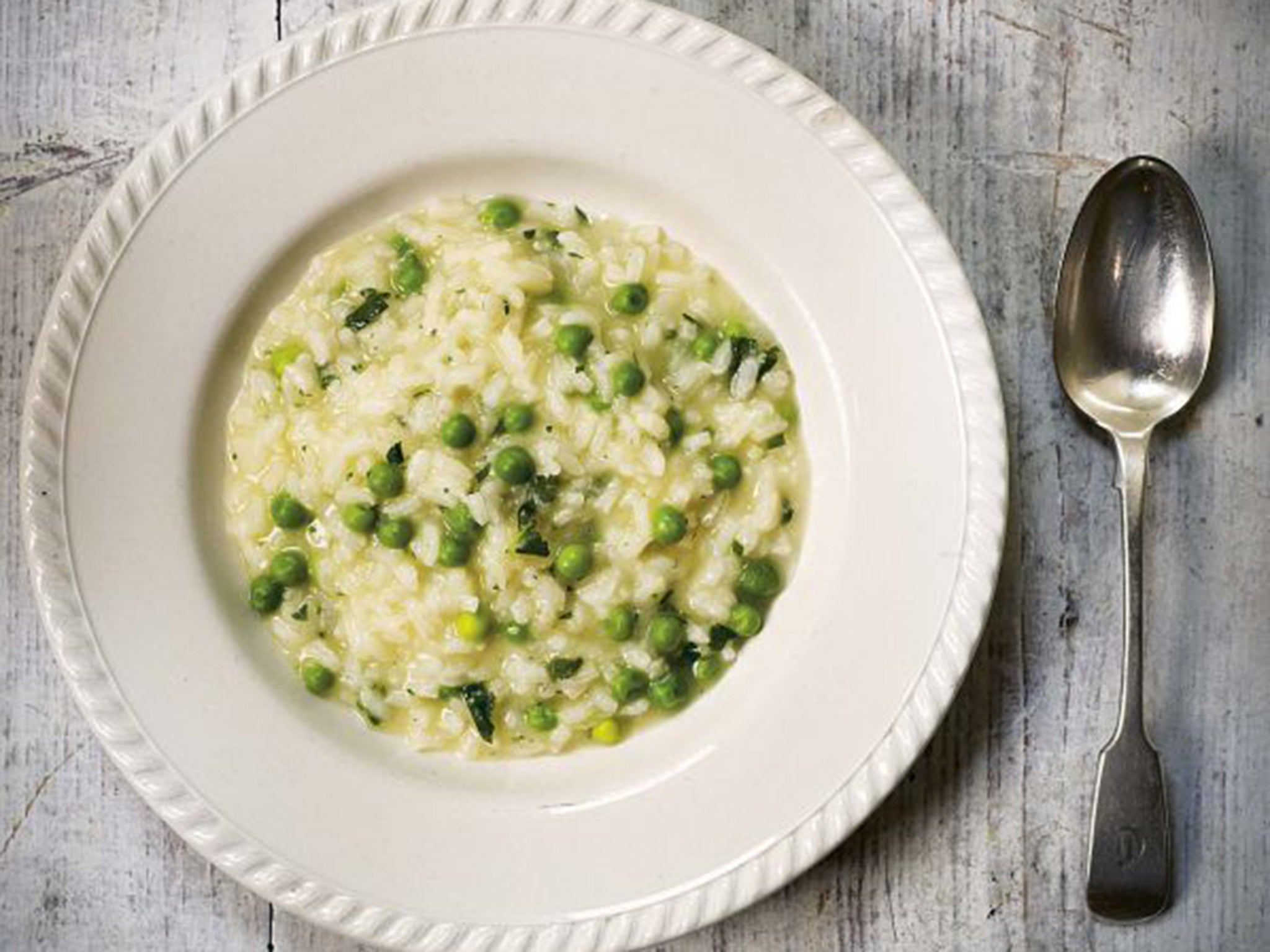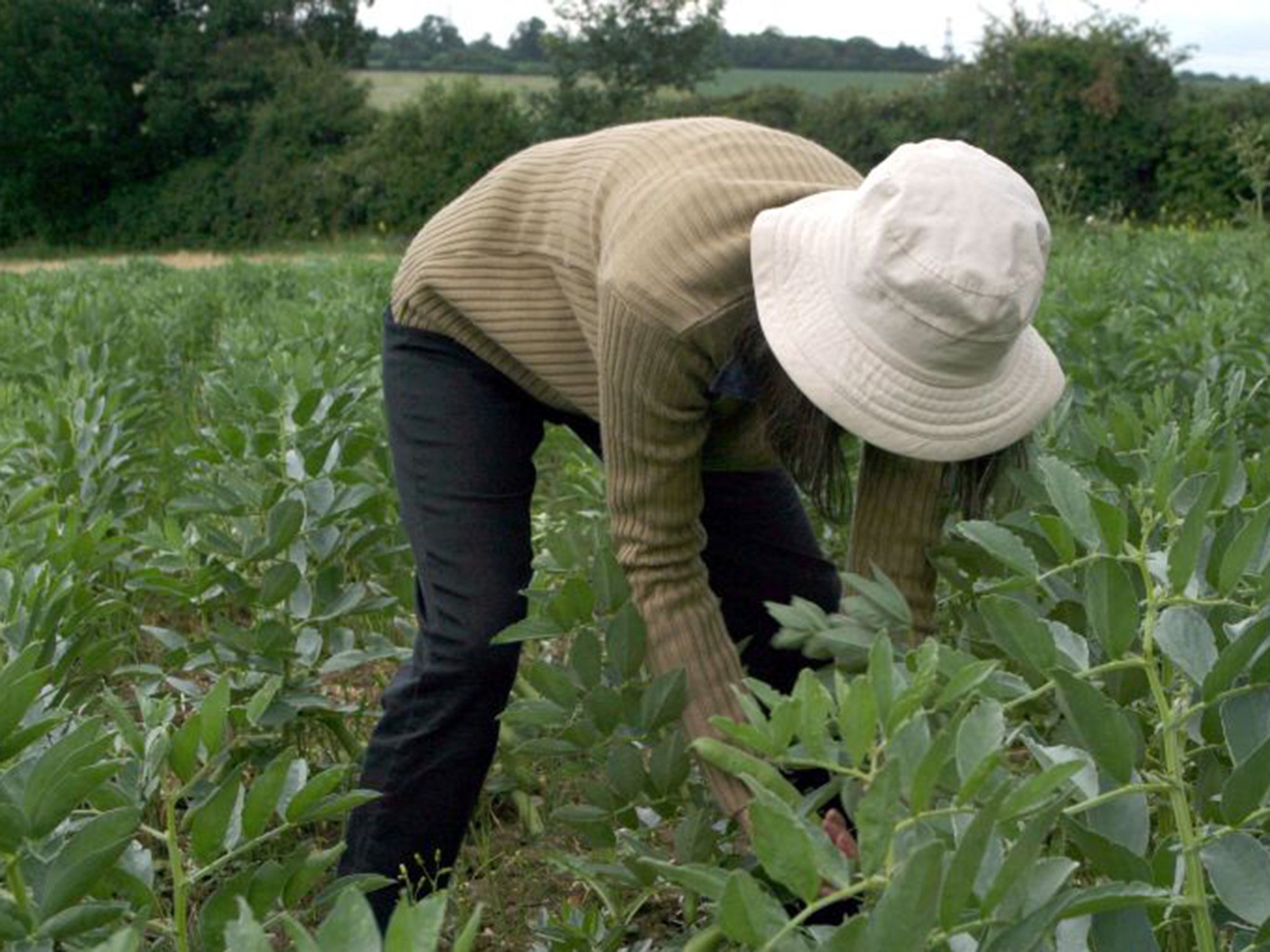Delicious ways to eat peas - just give them a chance
Fresh peas are a whole lot tastier than anything your freezer can offer up – and they’re at their best for only a few weeks, starting right now

Ask veteran chef John Campbell what his absolute favourite food is and the answer is not foie gras or some priceless Italian truffle but the garden pea – just coaxed out of its waxy pod.
Not only does he adore the amazing sweetness of a fresh pea, blanched and tossed in butter, salt and mint, but his idea of a fun day out with the family is gathering them from his vegetable patch, then podding them on the terrace. “My 15-year-old son Oliver is especially keen on podding peas so we do it together,” says Campbell. “The only challenge is to stop him eating them before they hit the bowl.” Eat at Campbell’s Berkshire restaurant The Woodspean right now and for a starter you’ll be offered a pea and mint soup (see recipe) that’s as green as grass.
Other chefs are also embracing the arrival of fresh peas with as much enthusiasm as asparagus in May. “Fresh peas are at their best for just four or five weeks, so we have to make the most of them,” says two-Michelin-starred Claude Bosi, who at this time of year both starts and ends his menu with peas at his Hibiscus restaurant. “Because of the ubiquity of frozen peas, peas have had a school-dinner image. Now they’re in fashion again as we’re realizing that fresh peas are fantastic.”
We consumers are also falling back in love with the simple pea in its pod, with a growing number of us viewing shelling as not chore but calming therapy. “The pastime transports people back to their childhoods,” says Sandra Ziles, head of product development at Marks & Spencer, which has seen a massive increase in demand for UK-grown fresh peas. Last year, sales rose by a staggering 72 per cent and similar increases are predicted for this year.
It’s as if we are discovering the beauty of the fresh green pea once again, rather as we Europeans did in the 17th century. (Until then, they’d been dried, a rich and vital source of protein to tide populations and their animals over the winter – think pease pudding, cooked every which way as in the nursery rhyme: “Pease pudding hot, pease pudding cold, pease pudding in the pot nine days old.”) Writing from the court of Louis XIV, Mme de Maintenon described excitedly her fellow courtiers’ “impatience to eat [peas], the pleasures of eating them,” relating how “There are ladies who, having supped… take peas at home before going to bed, at the risk of indigestion. It’s a fashion, a craze.” The French coined the name petits pois to describe them at their tenderest, a term we still use today.

A century later, the pea would be a favourite vegetable of America’s founding father Thomas Jefferson, who in his later years grew no fewer than 19 varieties in his kitchen garden in Monticello, Virginia. He even ran contests with local gentleman gardeners to see who could produce the first pea. The winner hosted a community dinner that included a dish of the winning peas.
Today’s pea craze is seeing us using fresh peas at home in a variety of recipes, many marrying pea with its perfect bedfellow, mint, in salads, soups and tarts. Peas combine beautifully with broad beans – also at their best now – to partner roasts or to top bruschetta. Or there’s the classic (and jauntily named) Risi e bisi, a luminous green pea risotto with a soupy consistency, with which Italians celebrate the arrival of the first peas (see recipe below). Interestingly the pods are part of the recipe, too, used to make the risotto’s stock. A word of warning though: when using fresh peas, don’t hang around, as their natural sugars quickly turn to starch, which spoils both flavour and texture. And don’t overcook them – they need just seconds in steam or boiling water. Many prefer them raw, like my granny who ate them raw in sandwiches.
Another pea product that home cooks can’t get enough of is pretty spiraled pea shoots, great as a garnish or salad ingredient. Steve Rothwell, who sells bagged salad leaves under the brand of Steve’s Leaves, says pea shoot and baby leaves is his best-selling product, with sales rising in value by nearly 30 per cent year on year. “Pea shoots are definitely the next big thing,” he says.
We’re also buying a raft of pea-based products from the supermarkets, which have gone pea-mad. M&S, for instance, has recently launched a potato and pea salad, two pea-based soups, a pea and mint dip, even a pea and mint vodka. In addition, it has cashed in on the new trend for vegetable juices by introducing an apple, pea and mint juice, which is flying off the shelves. “Consumers now ‘eat with their eyes’ and associate green food with healthy food,” says Ziles.
Rich in iron, vitamin C and amino acids, peas have become popular with health freaks, too – mainly in the form of pea protein powder, which is now a must-include ingredient in any vegetable smoothie.
Thanks to their sweetness and eye-catching colour, chefs often use peas in desserts, pairing them with acidic fruits such as strawberries and raspberries, or with chocolate, mint or coconut. Michael Wignall turns peas into a cassonade (pale brown raw crystallised sugar) which he sprinkles on to soft fruit in his dessert of glazed pea cassonade with Yorkshire strawberries, mint ice cream and crispy tapioca. In similar vein, Michelin-starred Matt Gillan makes a pea custard to accompany raspberry sorbet, while Claude Bosi is famed for his chocolate tart with pea and mint custard filling, served with coconut ice cream topped with pea powder made from dried pea pods. “Customers sometimes mistake the green for pistachio, but we explain that peas are naturally sweet so are perfect in a dessert,” says Claude. “Pea and mint, and pea and coconut are both classic combos. The dessert echoes the amuse-bouche of pea, coconut and curry at the start, so diners begin and end their meal on the same flavour – pea.”
With a vegetable that’s sweet, decorative and nutritious, maybe it’s time to give (fresh) peas a chance – and enjoy a bit of pea-podding therapy at the same time.
Recipes
PEA SOUP
This soup is served at John Campbell’s Berkshire restaurant, The Woodspeen. “Fresh peas give this soup a greater sweetness and depth of flavour than frozen – but frozen will do if you can’t find fresh,” Campbell says.
Serves 8
3 cloves garlic, crushed
200g onions
150g leeks
75g butter
1 litre water
1kg fresh peas
200g spinach
Salt and pepper to season
Crème fraîche to serve
Balsamic vinegar syrup to serve
Melt the butter in a large pan. Dice the leeks and onions into small pieces, add the garlic and sweat in the butter for 10 minutes, on a low heat, ensuring no colour change.
Add the water and bring to the boil. Add the peas, boil for 7 minutes, add the spinach and boil for two more minutes.
Place into a blender and blitz for 5 minutes until smooth. Lightly season with salt and pepper to taste.
If serving immediately, pour into bowls, add the crème fraîche and drizzle the balsamic vinegar syrup over.
RISI E BISI
This dish is served at Russell Norman’s Polpo restaurant
Serves 6
2kg fresh peas, shelled, pods reserved
2 onions, 1 cut in half, the other finely diced
2 litres boiling water
50ml olive oil
60g butter
150g pancetta lardons
Salt and black pepper
400g carnaroli rice
A handful of fresh parsley, chopped
A handful of fresh mint, chopped
A large handful of Parmesan
Place the pods (but not the peas) in the pan of boiling water with the onion halves, and simmer to make a stock for the risotto. (Move the freshly podded peas to one side, out of temptation’s way.) Boil for a minute, then take off the heat.
Sweat the diced onion in the oil and half the butter over a low heat. When shiny and translucent, add the pancetta and fry for a few minutes. Season with salt and pepper.
Add the rice and stir slowly for 2 minutes. Coat every grain in the grease, so it looks glossy and nothing sticks. Add just enough stock to the pan to cover everything, but not drown it. The contents will let off a satisfying hiss and a cloud of steam. The first ladleful will absorb and evaporate very quickly. Add another. If the pan continues to bubble, the heat is too high. Turn it down and stir slowly.
Stir for 15 minutes or so, adding a ladle of stock every time the rice looks less than wet. The idea is to let the rice absorb the liquid continually, allowing the grains to release their starch. Towards the end, add the peas, half the mint and half the parsley. Taste and add more salt if needed, not too much as the Parmesan will add a little salt to the balance.
Don’t be a slave to the clock: try the grains to see if they are done. They should still have a little bite to them. Make sure the mixture is runny. Unlike a regular risotto, risi e bisi should be more like a thick soup. Take off the heat. Stir in the Parmesan, the remaining butter, mint and parsley. Cover the pan and let it rest for a few minutes, then serve.
From ‘Polpo’ by Russell Norman, published by Bloomsbury
Join our commenting forum
Join thought-provoking conversations, follow other Independent readers and see their replies
Comments